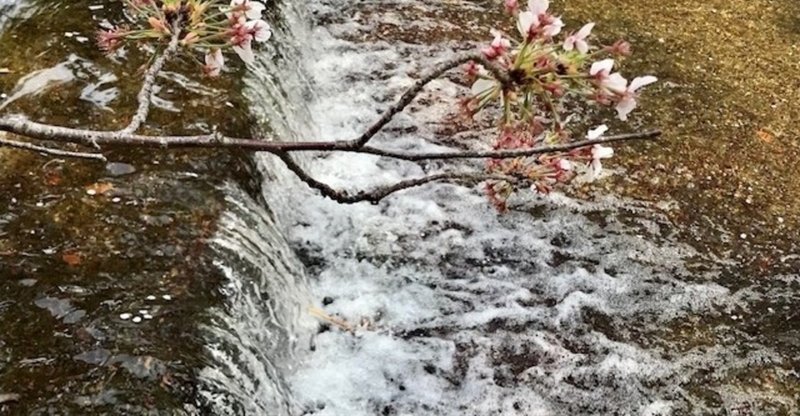
水は、科学と宗教の両視点で。 [高野山シリーズⅠ] Water is from both a scientific and religious perspective.
先日、比叡山延暦寺を紹介したが、その “比叡山” と “高野山” はいつも宗教事象として対比の的になる。理解するには困難かもしれないが、周辺の情報を知ることだけでも響くものがある。
The other day, I introduced the Hieizan Enryaku-ji Temple, but "Hieizan" and "Koyasan" are always contrasted as religious events. It may be difficult to understand, but even knowing the surrounding information can make a difference.
昨年、高野山大学主催の講演会を聴きに行った。テーマが「宇宙の摂理への想い」で、サブに「科学と宗教の視点から」となっていた。理解するには難しすぎる題目と思っていたが、実際は一般でも分かりやすいものだった。
Last year, I went to a lecture hosted by Koyasan University. The theme was "Thoughts on the Providence of the Universe," and the sub-subject was "From the perspective of science and religion." I thought it was too difficult to understand, but it was easy for the general public to understand.
講演者は二人で、まず国立研究開発法人の産業技術総合研究所の高橋正好先生の「泡」の話だった。水の中に散在する泡を極小にすればするほどその泡のもつ力が大きくなるというものだった。マイクロバブルよりももっと小さいナノバブルになれば、その泡の力は絶大になるという。その作り方からその力をもつ泡の活かし方までを分かりやすく解説された。
First of all, it was a talk about "bubbles" by Prof. Masayoshi Takahashi of the National Institute of Advanced Industrial Science and Technology, a national research and development corporation. The smaller the bubbles scattered in the water, the stronger the bubbles had. If it becomes a nano bubble that is smaller than a micro bubble, the power of the bubble will become enormous. It was explained in an easy-to-understand manner, from how to make it to how to make the best use of its powerful bubbles.
続いて、仏教界の重鎮として名高い、高野山金剛峰寺前座主で高野山真言宗前管長の「松長有慶大僧正」が演壇に立たれた。第一声が「先ほどの高橋先生はスライドを駆使されてお話されたが、私はなんにもありません」という微笑ましいツカミで始まった。
Next, "Matsunaga Ukei Daisojyo," who was a former Buddhist leader and was formerly chairman of the Kongobu-ji temple and former president of the Koyasan Shingon sect, took the stage. The first voice began with a smiley smile, "Takahashi-sensei talked about using slides, but I have nothing."
日本の仏教では、水は「単なる物ではなく生命ある物」という捉え方をしている。奈良東大寺の「お水取り」もそう。とくに真言密教の六大には「地・水・火・風・空・識」があり、その中の一つに「水」がある。その「水」の特長が、まず「清涼感」、「変幻自在に変わる力」、「洗浄力」そして「生育力」であると講話された。
In Japanese Buddhism, water is regarded as "a living thing, not just a thing." The same goes for "Omizutori" at Nara Todai-ji Temple. In particular, the six major Shingon esoteric Buddhisms have "ground, water, fire, wind, sky, knowledge", and one of them is "water." It was lectured that the characteristics of "water" were "coolness", "power to change in a metamorphosis," "cleansing power," and "growth power.
高橋先生と松長大僧正の話からしても、日本人はしぜんに「水」を大切にしているような気がする。それ以上に不思議な力をもつ存在として認めている。物質としての物と精神性の高い世界の中でなくてはならない物として存在している。
Even from the story of Professor Takahashi and Matsunaga Daisojyo, I feel that Japanese people still value water. I admit that it has more mysterious power than that. It exists as a material and an indispensable thing in a highly spiritual world.
身近にある「水」が、これからの地球に社会に人間に、さらなる具体的な貢献が見えてくるような気がした。
これから機会があるごとに、高野山を紹介したいが、情報がまだまだ不足しているので、いまの騒動が完全に落ち着いたら、また高野山に昇ってみようと思っている。
I feel that the familiar "water" will make a more concrete contribution to society and human beings in the coming earth.
I would like to introduce Koyasan every time I have a chance, but since there is still a lack of information, I will try to climb Koyasan again when the current turmoil is completely calmed down.

写真は、高野山大学通信教育課程パンフより転載。(2011年 ナムギャル僧院の僧侶が製作した砂マンダラ)
The photo is reprinted from the pamphlet of the correspondence course of Koyasan University. (Sand mandala made by a monk at the Namgyal monastery in 2011)
レポート & 写真(トップ) / 渡邉雄二
Reported & Photo(Top) by Yuji Watanabe
よろしければサポートお願いします。日本の伝統文化に関心を寄せています。若いころに文化圏の異なる地域の方たちとの交流で日本のことをあまりにも知らなかったことに気づかされ、それがきっかけで広く浅く学んでいます。拙いレポートですが、お目に留めていただければ幸です。
